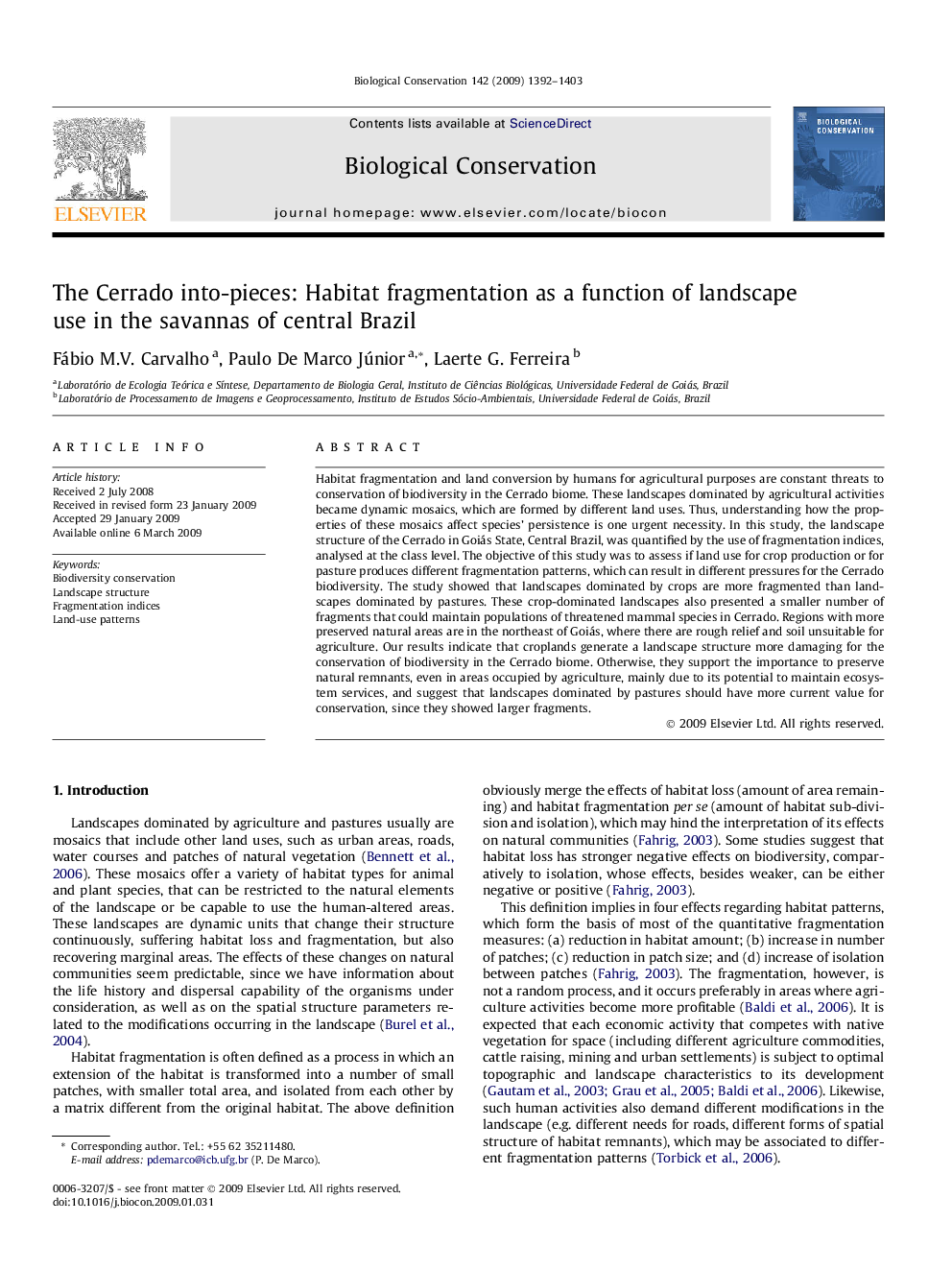| Article ID | Journal | Published Year | Pages | File Type |
|---|---|---|---|---|
| 4386472 | Biological Conservation | 2009 | 12 Pages |
Habitat fragmentation and land conversion by humans for agricultural purposes are constant threats to conservation of biodiversity in the Cerrado biome. These landscapes dominated by agricultural activities became dynamic mosaics, which are formed by different land uses. Thus, understanding how the properties of these mosaics affect species’ persistence is one urgent necessity. In this study, the landscape structure of the Cerrado in Goiás State, Central Brazil, was quantified by the use of fragmentation indices, analysed at the class level. The objective of this study was to assess if land use for crop production or for pasture produces different fragmentation patterns, which can result in different pressures for the Cerrado biodiversity. The study showed that landscapes dominated by crops are more fragmented than landscapes dominated by pastures. These crop-dominated landscapes also presented a smaller number of fragments that could maintain populations of threatened mammal species in Cerrado. Regions with more preserved natural areas are in the northeast of Goiás, where there are rough relief and soil unsuitable for agriculture. Our results indicate that croplands generate a landscape structure more damaging for the conservation of biodiversity in the Cerrado biome. Otherwise, they support the importance to preserve natural remnants, even in areas occupied by agriculture, mainly due to its potential to maintain ecosystem services, and suggest that landscapes dominated by pastures should have more current value for conservation, since they showed larger fragments.
